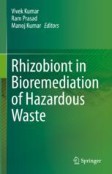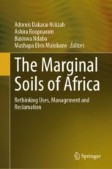Search
Search Results
-
Earthworms in Environmental Management and Ecotoxicology
There exists much evidence that earthworms improve soil fertility and productivity and that there have been many attempts to introduce earthworms...
-
Effects of native and non-native earthworms on grassland plant communities and abundance of associated arbuscular mycorrhizal fungi
Non-native earthworm invasions can greatly alter plant communities directly through root consumption, or indirectly, including through effects on...

-
Effects of Agricultural Practices and Chemicals on Earthworms
Earthworm activities in the soil are not all beneficial since they could act as pests and their influence is adverse. These include transmission of...
-
Bioindication and Biomarker Responses of Earthworms: A Tool for Soil Pollution Assessment
Hazardous pollutants from anthropogenicAnthropogenic activities are continually delivered into various natural spheres including the...
-
Earthworms, Plants, and GMO’s Towards Natural Bioremediation
The development of urbanization and increase in population has lead to the production of synthetic compounds. These compounds are toxic if not...
-
Biological Indicators of Soil Health and Biomonitoring
SoilSoil contaminationBiological indicators is a significant problem today, with the potential of impacting the terrestrialTerrestrial environment...
-
Earthworms act as biochemical reactors to convert labile plant compounds into stabilized soil microbial necromass
Earthworms co-determine whether soil, as the largest terrestrial carbon reservoir, acts as source or sink for photosynthetically fixed CO 2 . However,...

-
Sustainable Application of Genetic Ecotoxicological Techniques in Biomonitoring for Environmental Sustainability
The issue of environmental pollution is multifaceted due to the wide range of human-made agents, encompassing both chemical and physical elements...
-
Development Features on the Selection of Animal Models for Teratogenic Testing
Today, the use of animal models from different species continues to represent a fundamental step in teratogenic testing, despite the increase in...
-
Bioprospecting of Metarhizium anisopliae derived crude extract: a ecofriendly insecticide against insect pest
Synthetic pesticides are a considerable issue in both terrestrial and aquatic habitats. Green pesticides derived from fungi, provide an efficient...

-
Metabolomics as a valid analytical technique in environmental exposure research: application and progress
BackgroundIn recent years, studies have shown that exposure to environmental pollutants (e.g., radiation, heavy metal substances, air pollutants,...

-
Giant African snail invasion homogenizes seasonal soil biodiversity in tropical coral islands
Background and aimsBiological invasions have tremendous effects on soil biodiversity. Although the effects of invasive plants on soil biota have been...

-
Exploring Biotechnological Strategies in the Monitoring of Soil Quality
Land degradation caused by factors such as climate change and pollution is among the prominent environmental challenges currently confronting the...
-
Histopathological and biochemical alterations in Eudrilus eugeniae (Kinberg 1867) as biomarkers of exposure to monocyclic aromatic hydrocarbons in oil impacted site
BackgroundMonocyclic aromatic hydrocarbons are toxic compounds which are major components of petroleum products. This study was aimed at identifying...

-
Futuristic Approaches in Biofertilizer Industry Through Metabolomics, Proteomes, and Gene Editing
Agriculture is crucial to the economic growth of any nation. Modern agricultural practises and several types of fertilizers are used on a large scale...
-
Biomonitoring for Sustainable Development
Over the years, urbanization and industrialization in the Global South have led to human-induced environmental destruction. The extent of this...
-
Interaction of Invertebrates and Synthetic Polymers in Soil: A Review
AbstractPlastic pollution of the environment (including soil) is one of the world’s great problems; however, little is known about the effect of...

-
Root-rhizosphere-soil interactions in biopores
BackgroundEven with extensive root growth, plants may fail to access subsoil water and nutrients when root-restricting soil layers are present....

-
The potential of soil microbial communities to transform deoxynivalenol in agricultural soils—a soil microcosm study
Infestation of cereal fields with toxigenic Fusarium species is identified as an environmental source for the mycotoxin deoxynivalenol (DON). During...

-
Ecological effects of mosquito control with Bti: evidence for shifts in the trophic structure of soil- and ground-based food webs
The microbial control agent Bacillus thuringiensis var. israelensis (Bti) has been successfully used worldwide to reduce abundances of biting...

